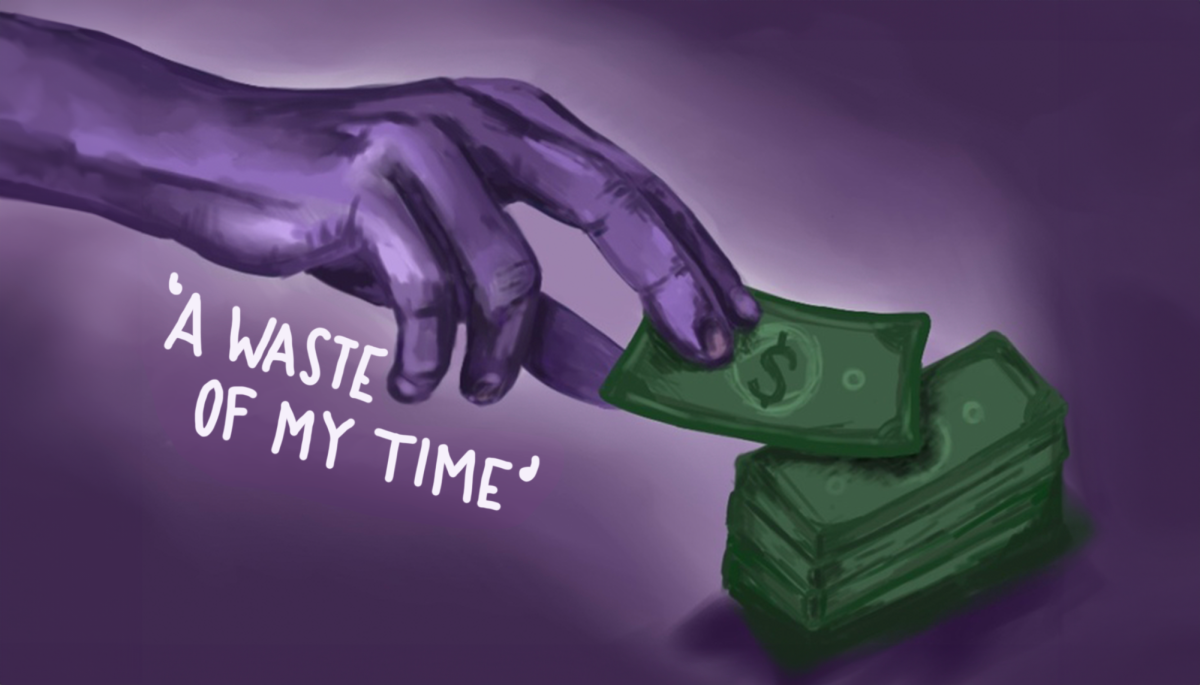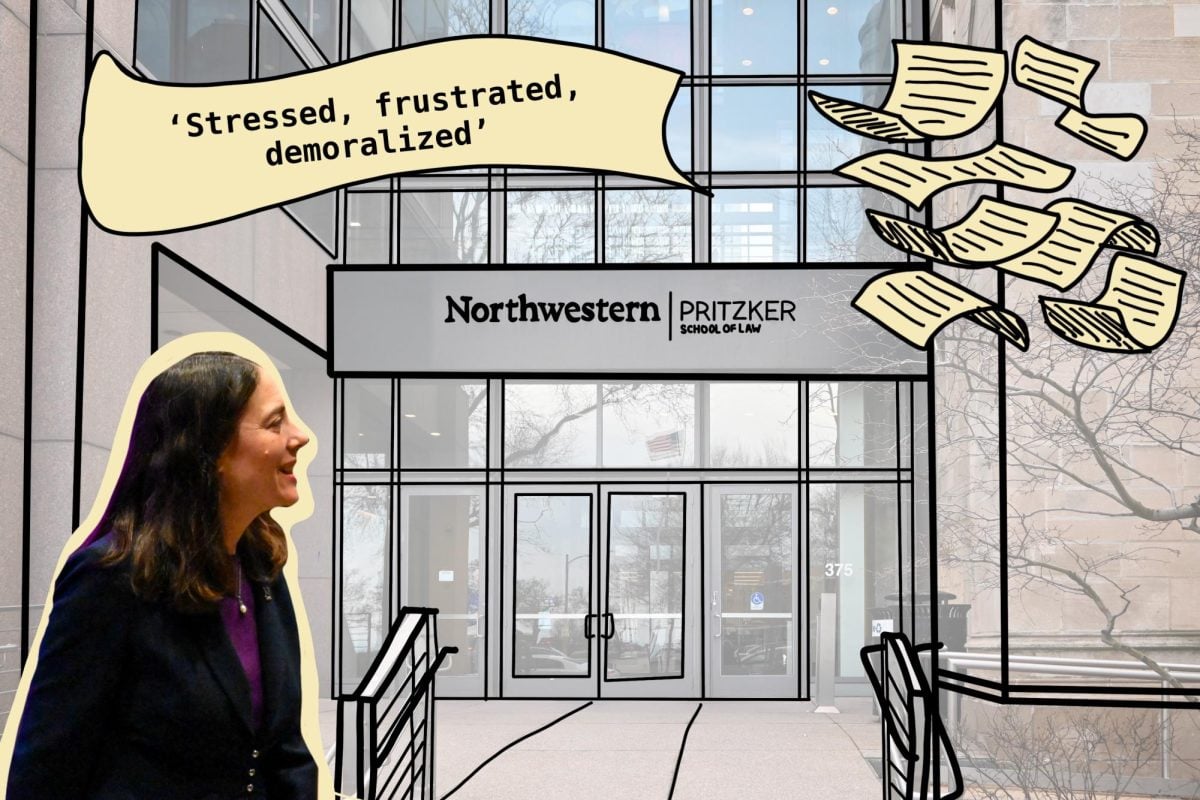For Valentine’s Day 2008, Missy Strelec got a face full of pepper spray and a trip to the police station.
Strelec, then a SESP sophomore, had stopped to use the Evanston Burger King’s bathroom with a friend who also attended Northwestern. When the students stepped out of their stalls, two girls were waiting to grab their purses, pepper spray in hand. Strelec clung to her bag and screamed for help, eventually drawing Burger King employees to her aid.
Incidents such as Strelec’s attack helped land NU on The Daily Beast’s 2010 list of the 50 most dangerous colleges in the United States. Based on crime statistics NU reported to the federal government, the news website gave NU the 49th-worst safety grade out of 458 schools with enrollment of more than 6,000.
But though Evanston may never be as safe as Bloomington - home of Indiana University, the Big Ten’s safest school according to The Daily Beast - a closer look at those statistics reveals NU is not as dangerous as it seems. In general, NU students said they feel safe on campus. Because of a few high-profile crimes, some students say they walk through Evanston with greater trepidation. Many others, including students such as Strelec who have experienced violent crime, say they do not.
“I cannot walk forward without having to look back over my shoulder.”
-Communication senior Justin Barbin, who was robbed
West Side Story
The statistics The Daily Beast used for its list came straight from University Police. The Jeanne Clery Act, named for a Lehigh University freshman raped and murdered in her dorm in 1986, requires colleges accepting federal financial aid to report annually on-campus crime statistics for the prior three years.
According to NU’s 2009 Clery report, which The Daily Beast used for its ranking, burglary was by far the most common crime on the Evanston campus between 2006 and 2008, with 411 being reported. A handful of more serious crimes, such as sexual offenses, aggravated assault and arson, were also reported. This year’s Clery report tallied 347 burglaries between 2007 and 2009.
UP Chief Bruce Lewis said at a campus safety meeting earlier this month he does not think NU has significantly more burglaries than other schools of its size. Nevertheless, property crime remains an issue for the University, he said.
“Fixing that is a community effort, and one we’re committed to improving,” Lewis said.
The safety of Evanston’s entire west side could use some improvement, Strelec said. After the Burger King attack, she hesitated to leave campus alone after sunset, particularly when westbound.
“The lighting is not as good, and there are a lot of dark alleys and garbage-filled areas that look like people could be hanging out in them,” Strelec said.
Communication senior Justin Barbin was five feet away from his Ridge Avenue and Davis Street apartment in May when a teenage boy grabbed him from behind, put him in a chokehold and threw him to the ground. When Barbin picked himself up, the STITCH photographer’s camera bag was gone.
The attack left scars on both Barbin’s forehead and his sense of security.
“I cannot walk forward without having to look back over my shoulder,” Barbin said.
Barbin said Evanston attracts a more economically diverse population than he encountered while growing up in suburban Houston. Crime sometimes spills over from low-income areas near NU, and because the neighborhoods immediately around campus seem so safe, it’s easy for students to let their guard down.
“We live in this beautiful bubble, and sometimes you don’t realize you’re stepping out of it,” Barbin said.
If Weinberg sophomore Stephanie Schuette ever finds herself outside the NU bubble unexpectedly, she plans to be ready to defend herself. She carries pepper spray on a keychain so she can walk alone in the dark without fear. Although Wilmette, her hometown, is just a few minutes away, she said she feels less comfortable in Evanston.
Although NU’s crime statistics have stayed consistent or decreased for most crimes over the past three years, drug arrests have soared, climbing from two in 2007 to 11 in 2008 and 29 in 2009. UP Cmdr. Darren Davis said he was unsure why arrests rose but suggested it might be due to an increased number of drug investigations.
Some crimes UP does not track, such as stalking, may be increasing as well. A growing number of students come to the NU Women’s Center seeking counseling for stalking-related issues, Director Renee Redd said.
Better lighting and greater police visibility would make Schuette more comfortable in Evanston, she said. But as a less-than-physically-imposing girl, she is always conscious of her surroundings.
More students should follow Schuette’s lead, said Sergio Serritella, a private investigator who works for the Medill Innocence Project. In his experience, NU students are shockingly oblivious to their surroundings. They allow their iPods and cell phones to consume their attention as they walk around campus, leaving themselves open to attack.
“I find Northwestern students to be extraordinarily talented, academically gifted, but not street smart,” Serritella said. “The criminals go to where the prey is.”
Looking on the Bright Side
But even Strelec’s close brush with those criminals failed to convince her Evanston is truly dangerous, she said. Her second thoughts about roaming Evanston alone in the dark did not ultimately prevent her from doing it.
Greater effort by the University would not have prevented Strelec’s mugging, she said. She attributed most of the blame for what happened to incautious choices she and her friend made, such as going to the bathroom directly after using an ATM and not checking whether they were being watched.
“I guess we weren’t very smart,” Strelec said.
Barbin also said his experience was just a freak occurrence. He had already lived in his apartment for almost two years when he was robbed, and he regularly came home at 3 a.m. without incident. On the night his camera was stolen, he returned at the theoretically safer hour of 10 p.m.
“I feel like it’s not an unsafe city,” he said. “I was just at the wrong place at the wrong time.”
Based on Katie Bradford’s experience organizing this year’s Associated Student Government Light Walk, the student life vice president thinks most students agree with Barbin’s assessment.
Light Walk, an annual event in which ASG leads NU officials around campus’s darkest areas and encourages them to improve the lighting there, relies on student input to determine which areas seem most dangerous, Bradford said. Though ASG has received many responses to its e-mails asking students where they feel least safe, few have demanded immediate action.
“Most of the responses haven’t been urgent, like, ‘I feel completely unsafe walking here,'” Bradford said.
NU officials have been receptive to safety concerns raised by ASG in the past, Bradford said. NU has always installed new lights at the Light Walk sites from previous years.
“God’s Green Apple Cart”
Although University administrators and police do not
contest the information The Daily Beast list included, it lacked contextual information that might have shown NU in a more favorable light, they said.
The University’s rigorous compliance with the Clery Act’s reporting standards has elevated the school’s burglary count in the last few years, Lewis said.
Traditionally, police have classified cases as burglaries only when there were signs of forced entry, Lewis said. But three years ago the Clery Act began requiring schools to report all missing item cases as burglaries, even if they did not involve a break-in.
NU, which devotes an entire office to complying with such laws, quickly transitioned to the new classification, Lewis said. Other schools may not have.
“I cannot tell you that my colleagues across the country are guilty of not expanding their interpretation, but what I can say is we did adopt the broader definition,” Lewis said.
Vice President for Student Affairs William Banis was blunter.
“I suspect we’re way ahead of the curve, and others are lagging,” Banis said.
The University of Michigan likely landed its No. 22 position on the list for similar reasons, Michigan Police Sgt. Gerry Steiner said. Some of the figures The Daily Beast listed for Michigan appeared erroneous to him. The 142 car thefts it claimed had occurred on campus particularly surprised him.
“Their stats – I don’t even know where in God’s green apple cart they got some of them,” Steiner said.
Steiner once visited Evanston for a conference. Both it and Ann Arbor, the town in which his university is located, are beautiful and peaceful, he said.
Lewis emphasized that of the crimes that do occur at NU, the vast majority are against property, not people. Between July 2010 and September, UP recorded only three crimes against persons. One such crime occurred in late July, when a driver made a U-turn on Sheridan Road to flash a gun at a student.
A possible explanation for the low number of crimes recorded in that period is that fewer students were on campus during the summer. But Lewis said the University is fortunate most crimes committed in its vicinity have been no more major than that July incident.
“I would argue that this is a very safe campus,” Lewis said.
Stepping up Security
NU is still working to make it safer.
Starting in 2007, the University replaced its residential security monitors with the community safety officers who now guard dorms from 8 p.m. to 6 a.m. It also installed security cameras in all dorms and alarms on the dorms’ side doors.
At the time of their introduction, these changes were controversial. An ASG poll taken in Winter 2006, when the plan was being discussed, found that 90 percent of students disapproved of the alarms. Now most students pass the added safety equipment without glancing twice at it.
Following the shooting that killed five people at Northern Illinois University in 2008, NU also created a campus watch team to monitor situations in which one member of the NU community may pose a threat to another. The team has dealt with 14 cases this quarter, Lewis said.
If NU wanted to tighten its security further, it could follow Indiana University’s model. Indiana has about 30 student officers who live in and patrol the dorms in addition to a full-time police force, IU Police Chief Keith Cash said. The students’ familiarity with their peers can make them more effective than traditional police, Cash said.
There may be only so much NU can do to equal Indiana’s safety record given the universities’ locations. Evanston borders the country’s third-largest city, while Bloomington borders corn.
“One would love to take credit that it was all due to the police,” Cash said. “I’m not sure that would be accurate.”
Though student officers may not be on the horizon, NU has continued to implement smaller security improvements. Just this quarter, UP bought several three-wheeled scooters for its officers to use on sidewalks and at football games, Deputy Chief Dan McAleer said. Police hope the scooters’ novelty will increase officers’ visibility.
The University plans to keep making such additions, Lewis said. Although campus may be safe in reality, the fact that some students think otherwise means NU still has a problem.
“With that perception, there’s anxiety that’s created, and that’s real,” Lewis said.
But for Barbin, at least, that anxiety has been dissipated by the majority of his experiences in Evanston. Although being robbed initially left him shaken, the response of his friends – which included forming a Facebook group that raised the money to replace his camera – helped restore his confidence in the NU community.
“There are wonderful, kind people here,” he said. “Sometimes these things just happen.”






